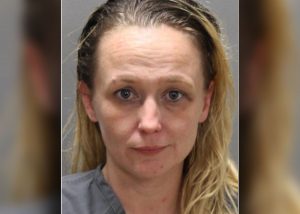President Joe Biden‘s administration has been facing a major influx of migrants at the U.S.-Mexico border since he took office, and the care of unaccompanied children has become a top national concern.
As a result, the Department of Health and Human Services (HHS) has announced five new intake sites and influx care facilities to temporarily house unaccompanied migrant children.
HHS said it has about 7,700 children in its care and its Office of Refugee Resettlement’s (ORR) network of more than 200 facilities has increased its bed capacity to 13,500.
However, an HHS spokesman said additional capacity is “urgently needed” to manage COVID-19 mitigation strategies and the increasing number of unaccompanied children referrals from the Department of Homeland Security (DHS).
The temporary facilities provide a less-crowded environment where children are cared for, processed and released to a sponsor or transferred to an ORR shelter for longer-term care.
On February 22, HHS reopened the Carrizo Springs Influx Care Facility in Carrizo Spring, Texas, adding 952 beds to the ORR network. According to the Washington Post, this was the first migrant child facility opened under the Biden administration. The facility was opened during the summer of 2019 under the Trump administration.
During a press conference on February 23, White House Press Secretary Jen Psaki said the facility was meant to be temporary.
“To ensure the health and safety of these kids, HHS took steps to open an emergency facility to add capacity,” Psaki said. “Our intention is very much to close it, but we want to ensure that we can follow COVID protocols, as unaccompanied minors come into the United States.”
On Tuesday, an ORR spokesperson confirmed the activation of a second influx care facility at Carrizo Springs that will accommodate about 500 children.
HHS also recently announced that an influx care facility will soon open in Pecos, Texas, with a potential capacity of 2,000 beds.
With the help of the Federal Emergency Management Agency (FEMA), HHS opened two emergency intake sites in Midland, Texas, and Dallas, Texas, in March. The facility at the Kay Bailey Hutchison Convention Center in Dallas can hold more than 2,000 children.
DHS Secretary Alejandro Mayorkas asked FEMA to assist HHS and ORR by increasing facility bed capacity, as part of a government effort over the next 90 days to receive, shelter and transfer unaccompanied children.
In addition to the facilities already announced, HHS continues to request other facilities be used as shelters.
Pentagon spokesman John Kirby told reporters in a briefing Tuesday that HHS submitted a formal request to use Joint Base San Antonio and Fort Bliss as temporary housing for migrant children.
In a joint statement Monday, San Diego Mayor Todd Gloria and San Diego County Board of Supervisors Chair Nathan Fletcher announced that HHS also requested the use of the San Diego Convention Center as a temporary shelter.
“When HHS Secretary Xavier Becerra requested our help to house some of the unaccompanied minors at the border, we knew it was the right thing to do,” Gloria and Fletcher said in the statement. “We agreed to open our convention center to the federal government for use as a temporary shelter.”
During a February 25 press conference, Psaki said the objective of the Biden administration is to move unaccompanied children as quickly as possible “to families that have been vetted and to reunite kids with their families.”
“Our best option, in our view, is to get these kids processed through HHS facilities where there are COVID protocols in place, where they are safe, where they can have access to educational and medical care,” she said.
In February, the Border Patrol encountered almost 9,300 unaccompanied children at the border, up from about 5,700 in January, according to CBP.
In a statement to Newsweek on Tuesday, ORR said it is working to ensure children don’t spend more time in Border Patrol facilities than necessary by safely increasing capacity in its permanent, licensed network by implementing enhanced COVID-19 mitigation strategies; safely reducing the time it takes to unify unaccompanied children with a sponsor; using intake care facilities with the same standards of care used in its permanent, licensed network; and establishing emergency intake sites to decrease overcrowding in CBP facilities.
“ORR is committed to aggressively moving toward the long-term goal of acquiring enough state-licensed beds in our care provider network to reduce the need in the future for Influx Care Facilities or Emergency Intake Sites,” the statement read.
Unaccompanied children are defined by the HHS as those age 17 or under who have no lawful immigration status in the U.S. and are without, or were separated from, a parent or legal guardian.
PATRICK T. FALLON/AFP via Getty Images



















